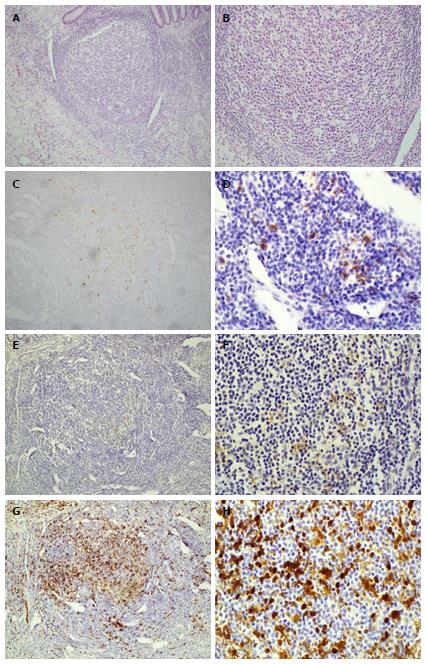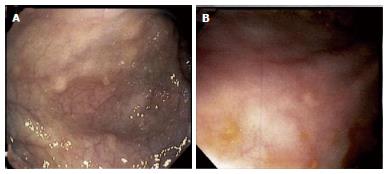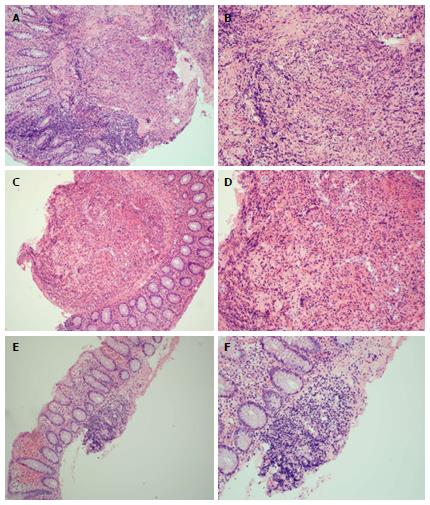Copyright
©The Author(s) 2017.
World J Gastrointest Endosc. Mar 16, 2017; 9(3): 139-144
Published online Mar 16, 2017. doi: 10.4253/wjge.v9.i3.139
Published online Mar 16, 2017. doi: 10.4253/wjge.v9.i3.139
Figure 1 Histology and immunohistochemical stains of appendix confirming diagnosis of Langerhans cell histiocytosis.
The appendix shows an overgrowth of histiocytes in the lymphoid aggregates at 10 × (A) and 40 × (B) magnifications of H and E stains; while the electron microscopy images did not show Birbeck bodies due to previous fixation, the Langerin stain (CD207) demonstrates their presence in the areas of concern at 10 × (C) and 40 × (D) magnification. CD1a stains at 10 × (E) and 40 × (F); S-100 stains at 10 × (G) and 40 × (H).
Figure 2 Gross appearance of colonic lesions on endoscopy.
Wide (A) and close-up (B) views of approximately 5 mm whitish-yellowish polypoid lesions found throughout the colon. Biopsy and immunohistochemical staining demonstrated CD1a, S-100, and langerin reactivity confirming langerhans cell histiocytosis-related lesions (see Figure 3).
Figure 3 Histology of colonic samples consistent with Langerhans cell histiocytosis.
Grossly, the colon biopsies were each received as small fragments of tissue, where no tissue defects could be determined due to the size of the specimens received. Microscopically, the cecum (A and B, 10 × and 20 ×, respectively), descending colon (C and D, 10 × and 40 ×, respectively), and transverse colon (E and F, 10 × and 20 ×, respectively) each show nodules that are similar in morphology to the appendix and (although not shown here) share the same staining patterns (CD1a, S-100, and langerin reactivity). Again, electron microscopy was unsuccessful in highlighting the Birbeck bodies due to formalin fixation.
- Citation: Karimzada MM, Matthews MN, French SW, DeUgarte D, Kim DY. Langerhans cell histiocytosis masquerading as acute appendicitis: Case report and review. World J Gastrointest Endosc 2017; 9(3): 139-144
- URL: https://www.wjgnet.com/1948-5190/full/v9/i3/139.htm
- DOI: https://dx.doi.org/10.4253/wjge.v9.i3.139











